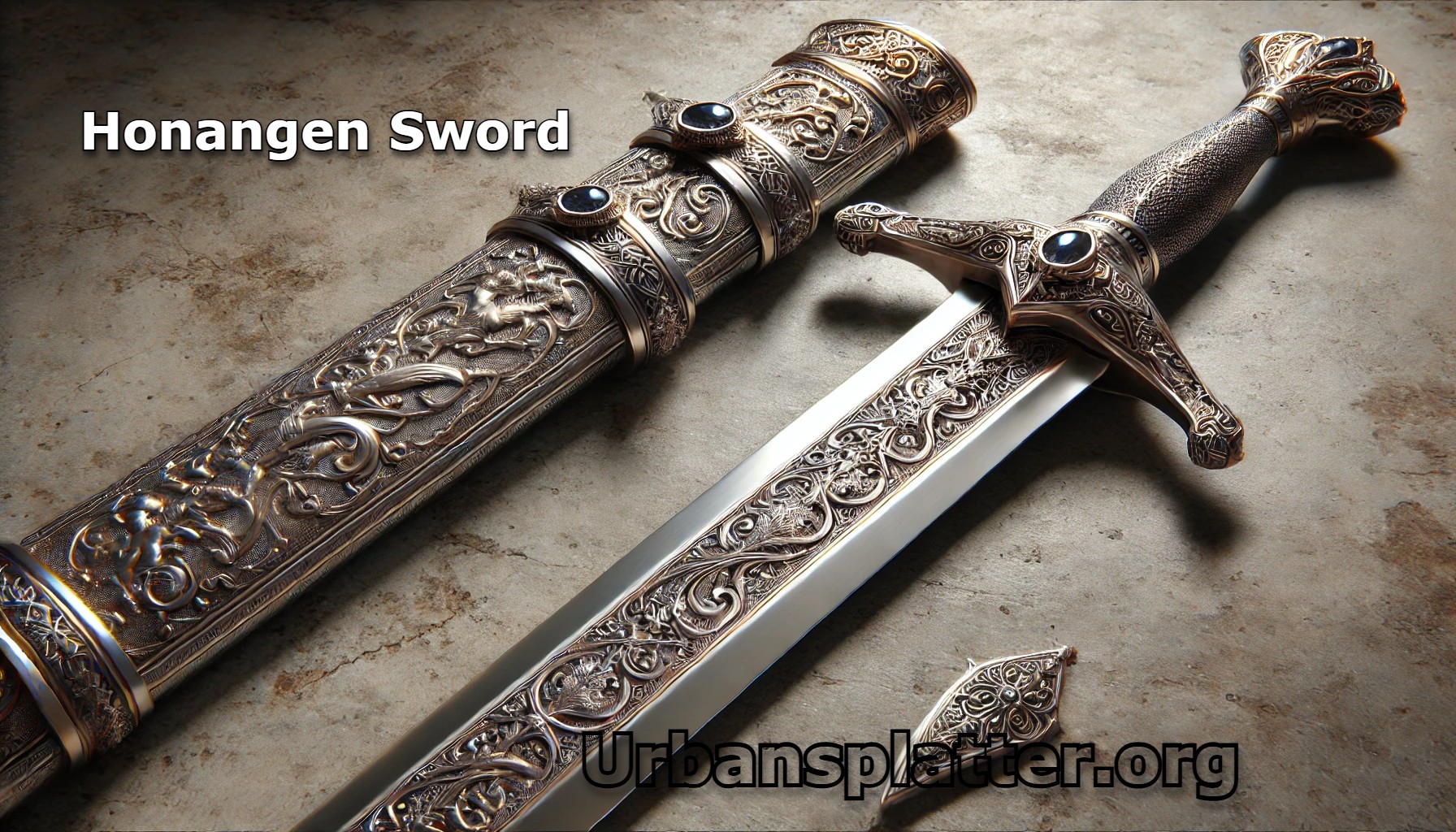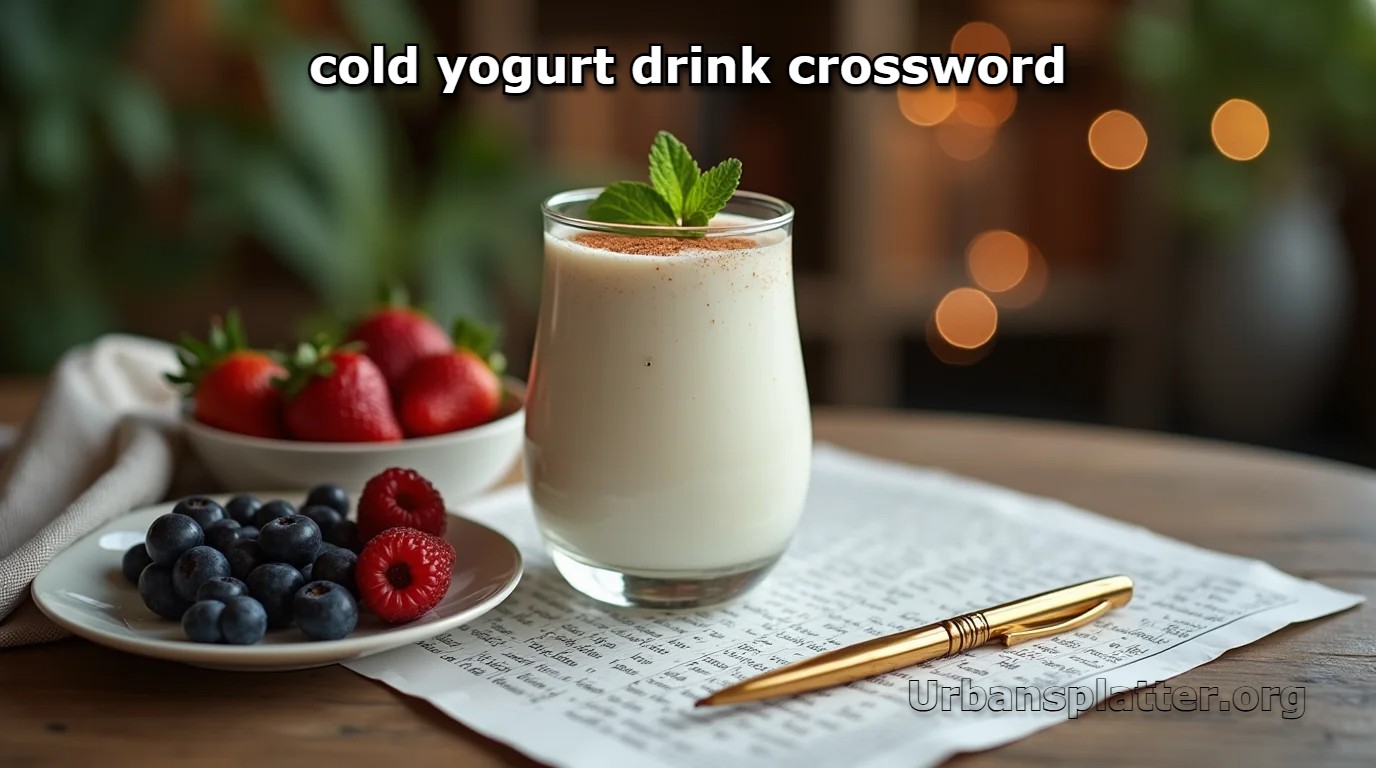Picture yourself in a dimly lit dojo, the scent of old wood and the sound of practiced strikes fill the air. Here lies a humble yet magnificent weapon the Honangen sword. This isn’t just a blade; it’s a cultural artifact that enchants warriors and collectors alike. In this blog post, you’ll uncover the history, significance, and modern-day interpretations of this remarkable sword.
The Origins of the Honangen Sword
The Honangen sword has fascinating roots, stretching back to ancient times. It isn’t just any blade; it carries with it a rich history and cultural significance that resonates in martial arts even today. Have you ever experienced the connection a warrior feels with their sword? As Master Yamato wisely stated,
“The sword must not only be a tool but an extension of the warrior’s spirit.”
This sentiment captures the essence of what the Honangen sword represents.
Historical Background and Evolution
Dating back to the 15th century, the Honangen sword showcases a unique blend of different cultural influences. Throughout its history, this sword has evolved in design and usage. Initially crafted for battle, it also became a symbol of status and honor.
- Influences from other traditional swords have played a role in its design.
- The sword’s blade reflects the craftsmanship of various cultures.
- Materials used changed, driven by trade and technological advancements.
What battles could this sword have seen in its long life? The question is captivating because many notable battles have utilized the Honangen sword. It has been a silent observer, participating in skirmishes, duels, and great wars.
Cultural Significance in Martial Arts
Often viewed as more than a mere weapon, the Honangen sword holds a significant place in martial arts. Many martial artists dedicate years to mastering not only the sword techniques but also the philosophy behind its use. This blending of the physical and the spiritual creates a deep, meaningful practice.
Instructors teach that each movement with the sword embodies the warrior’s intent and focus. The Honangen sword represents discipline, honor, and dedication. It’s a testament to years of learning, much like how one might see a sculptor grow in their process.
Notable Historical Figures Associated with the Sword
Throughout history, certain figures have been closely associated with the Honangen sword. These warriors and masters have left an indelible mark on martial arts, helping to refine and popularize the sword’s techniques.
- Master Yamato: His teachings on the spiritual connection to the sword have transformed practices worldwide.
- Sage Hiro: A well-known historian who chronicled the sword’s significance in battle.
- Warrior Takara: A legendary figure in combat, known for wielding the Honangen sword in defining battles.
Notable Battles Involving the Honangen Sword
This sword has participated in numerous battles, each contributing to its mythos. But have you heard how many battles? Let’s put it into perspective:
| Year | Notable Battle |
| 1453 | The Great Confrontation |
| 1478 | The Clash of Warriors |
| 1501 | Battles of Honor |
With each clash, the Honangen sword not only served its purpose but also became a revered object, symbolizing bravery and virtue across various cultures. Understanding its journey invites you to appreciate its significance beyond the physical blade.
Conclusion
Exploring the origins, cultural significance, and history of the Honangen sword reveals its importance in martial arts and society. The next time you think of a sword, consider the legacy it carries much like the warriors who wield it.
Craftsmanship: The Art Behind the Blade

Crafting a sword is not just a task; it’s an art. It combines skill, tradition, and raw materials to create a unique weapon. In this world of mass production, how do artisans keep the craft alive? Let’s explore the materials, techniques, and importance of handcrafting when it comes to sword-making.
Materials Used in Sword Making
The choice of material is crucial. Different types of steel yield different qualities. For instance, the famed Damascus steel is known for its unique patterns. It is also prized for both beauty and strength. Blacksmiths often use:
- High carbon steel: Offers excellent hardness and edge retention.
- Stainless steel: Known for its rust resistance, but can be softer.
- Tool steel: Great for its durability.
- Alloy steel: Provides strength and flexibility.
What material will you choose? Whichever you select, know that it will directly affect the blade’s performance. A sword that feels right in your hand is often the result of careful material selection.
Techniques Passed Through Generations
Craftsmanship isn’t just about materials. It’s about the techniques. These techniques have been passed down through generations, ensuring that the art of sword-making remains refined. Some notable techniques include:
- Forging: This process shapes metal by heating and hammering it. It creates the sword’s initial form.
- Quenching: Rapidly cooling the heated blade in oil or water hardens the metal.
- Tempering: This softens the blade slightly, enhancing its durability and reducing brittleness.
- Polishing: A final touch that not only makes the sword shine but also helps in aesthetics and function.
Do you see how these techniques connect the past to the present? Each blacksmith adds their flair while preserving time-honored methods.
Importance of Handcrafting
In a world flooded with mass-produced swords, handcrafting stands out. Here are some reasons why it matters:
- Quality: Each handcrafted sword is unique. The small imperfections add character and show the time spent creating it.
- Connection: An artisan often connects emotionally with the piece they are working on, ensuring every detail is perfect.
- Tradition: Handcrafting keeps age-old traditions alive. It celebrates the history and the mastery of the craft.
When you pick up a handcrafted sword, you hold not just a weapon, but a piece of history.
Statistics on Sword Craftsmanship
| Aspect | Details |
| Percentage of artisans still practicing traditional methods | Approximately 20% |
| Type of materials preferred in crafting | High carbon steel (40%), Damascus steel (30%), Stainless steel (20%), Tool steel and Alloy steel (10%) |
Each sword tells a story crafted in steel and spirit. As artisan Kenji wisely puts it, this spirit is what separates a handcrafted sword from the countless mass-produced ones.
Have you considered the craftsmanship involved in creating an Honangen sword? It’s a testament to the dedication of artisans. They infuse every blade with passion, history, and an unwavering commitment to their art.
The Honangen Sword in Martial Arts

Have you ever wondered how a weapon can shape a warrior’s mindset? The Honangen sword is more than just a blade; it’s a symbol of discipline and tradition in various martial arts. Its use spans a range of techniques, customs, and stories from dedicated practitioners. Let’s dive into its role and significance.
1. Role in Traditional Martial Arts Disciplines
The Honangen sword holds a special place in traditional martial arts. From kendo to iaido, this sword serves as a bridge between physical skill and mental focus. It teaches practitioners not just how to fight, but how to honor the history behind their craft.
Imagine holding a weapon that connects you to centuries of tradition and discipline. That’s what the Honangen sword offers.
2. Techniques and Forms Associated with the Sword
When practicing with the Honangen sword, various techniques come into play. Some of the most popular forms include:
- Kata: Pre-arranged forms that teach precision and flow.
- Combatives: Combating styles that focus on real-life scenarios.
- Target practice: Enhancing accuracy through sharp movements.
Each of these techniques acts like a stepping stone. They help you improve your reaction time, balance, and agility. Besides that, they foster a deeper connection with the sword. You’re not just swinging a metal object; you’re practicing an art.
3. Stories from Practitioners Who Trained with It
Every practitioner has a unique journey. Take the story of Mr. Saito, who started training at the age of 40. He recalls the first time he held the Honangen sword. “It felt like a part of me was awakened,” he said. For him, every training session became a spiritual experience. It was about more than mastering techniques; it was about finding inner peace.
Then there’s Geraldine, a young black belt who travels to Japan every summer to train. She emphasizes how the Honangen sword deepens her appreciation for her art. “The Honangen sword is not just a weapon, it’s a way of life.” – Sensei Takahashi serves as her guiding philosophy.
4. Interaction with Other Weapons
The Honangen sword often interacts with other weapons in martial arts. While it has its unique techniques, combinations are common. Have you considered how a sword pairs with a staff or dagger in training? Practitioners learn to adapt their skills based on the weapon they choose. This adaptability is crucial for any martial artist.
5. Places Where These Techniques are Taught
If you are interested in learning about the Honangen sword, many dojo and martial arts schools across the U.S. offer specialized training. From California to New York, find a dojo that resonates with your goals. Look for schools that pair traditional teachings with modern applications. This combination enhances not just your skills but your understanding of martial arts as a whole.
6. Importance in Dojo Rituals
The Honangen sword isn’t only about fighting; it’s integral in dojo rituals. These rituals can include:
- Bowing upon entering the dojo.
- Respecting your sword by maintaining it carefully.
- Participating in group exercises that strengthen community bonds.
These practices highlight respect and acknowledgment of martial arts history. They remind you that every warrior is part of a larger story.
7. Growth in Sword Martial Arts Popularity
Over the years, the popularity of sword martial arts has seen a surge. More martial arts schools in the U.S. are incorporating the Honangen sword into their curricula. Why is this happening? Perhaps people are drawn to the elegance and discipline the sword represents. It’s not just about being a fighter. It’s about being a student of history.
Understanding the complexities of the Honangen sword will make your training journey even more rewarding. Immerse yourself in the blade, and who knows what you might discover?
Innovative Takes on the Honangen Sword

The Honangen sword, a fascination for many, is not just a relic of the past. It’s a symbol of innovation. But what does innovation mean for swords like the Honangen?
Modern Adaptations and Variations
As time passes, traditional designs have graphed their way into modern adaptations. Manufacturers often update classic shapes to make them more user-friendly. You might wonder, how does a centuries-old weapon keep up with the times? Here are some examples:
- Sword weight and balance are adjusted for better handling.
- New blade shapes optimize cutting efficiency.
- Some creators are employing techniques like laser engraving for unique designs.
Imagine holding a sword that feels alive. That’s what new adaptations aim to provide. An Honangen sword today may look different, but its essence remains intact.
Incorporation of New Materials and Technology
What happens when traditional craftsmanship meets modern science? A breakthrough! Today’s swords often utilize advanced materials that make them lighter and stronger:
- Carbon Fiber: This material is light and incredibly strong. It allows sword makers to create weapons that are both durable and easy to wield.
- High-Grade Stainless Steel: Many new swords use a type of steel that resists corrosion and wear. This means your sword can last longer and stay beautiful.
- Smart Technology: Believe it or not, some modern swords even incorporate sensors to provide feedback on grip and technique.
Innovation is not just for tech gadgets. Swords too have jumped into the fray, reshaping the way you think about weaponry.
Influence on Contemporary Sword-Making
The impact of innovative approaches is evident in how swords are crafted today. Several industry leaders have stepped forward, emphasizing tradition while embracing modernity. What are they doing?
- They collaborate with martial artists to understand how swords are used, ensuring their designs suit a modern fighter’s needs.
- There’s a growing focus on aesthetics new finishes and colors breathe life into classic designs.
- Password-protected scabbards or cases are also becoming popular, combining security with style.
With these influences, contemporary makers show that the Honangen sword can thrive alongside today’s advancements.
Comparison to Other Modern Swords
Are you familiar with other modern swords? Comparisons can reveal fascinating insights. Many modern swords share features, such as:
- Enhanced ergonomics for comfort.
- Materials that reduce weight while increasing strength.
- Design elements that make handling easier.
By examining these features, it becomes easier to appreciate the Honangen sword within its modern context.
User Preferences for Modern vs. Traditional Swords
User preferences vary widely. Some enthusiasts cling to tradition, while others crave innovation. The question arises, do you value the classics, or are you drawn to futuristic designs?
Some users appreciate:
- The authenticity of traditional swords.
- The uniqueness of modern adaptations.
Understanding these choices can improve how makers approach design and production.
Emerging Technologies in Sword Crafting
Technological advancements are ever-present in weapon making. New robotic and laser-cutting technologies ease the creation of intricate designs, cutting down on production time. More importantly, these innovations allow for precision craftsmanship that manual labor alone may not achieve.
As Designer Hiroshi wisely stated,
“Innovation is not forgetting your roots but enhancing them.”
This rings true in the world of sword making where each new development elevates the Honangen sword’s legacy, rather than substituting it entirely.
As we explore these innovative pathways, it’s essential to recognize the blend of tradition and modernity in crafting today’s swords. The journey reveals not just a weapon, but artistry woven through time.
Collecting Honangen Swords: A Guide for Enthusiasts

Are you ready to start your journey into the world of Honangen swords? Collecting these stunning pieces can bring immense joy. However, it requires knowledge and caution. In this guide, you’ll find essential tips on how to acquire authentic swords, understand craftsmanship, and ensure their protection.
1. Tips for Acquiring Authentic Swords
Finding authentic Honangen swords is no small feat. Here are some tips to help you secure genuine items:
- Research Sellers: Always research sellers before purchasing. Investigate online reviews, and seek out recommendations. Your best advantage lies in gathering as much information as possible.
- Check Provenance: The sword’s history matters. A well-documented provenance helps assure authenticity. Ask for any certificates or records of authenticity.
- Be Wary of Deals: If a deal seems too good to be true, it likely is. Authentic Honangen swords come with a price tag. Be cautious of extremely low prices.
As you follow these tips, remember: “A true collector understands the soul of each sword.” – Collector Anna. This sentiment reflects the heart of collecting. It’s not just about the acquisition; it’s about connection.
2. What to Look for in Craftsmanship
Craftsmanship makes or breaks your collecting experience. Here’s what you should pay attention to:
- Materials Used: Authentic swords usually feature high-quality materials, like steel or iron. Pay attention to the texture and finish. How does it feel in your hand?
- Blade Details: Examine the blade closely. Are there any intricate designs or engravings? Quality craftsmanship often reveals itself in fine details.
- Balance and Weight: Hold the sword. It should feel balanced in your hand. If it feels heavy or awkward, it may not be an authentic piece.
Each of these elements tells a story. You want to collect pieces that speak to you. Think of it like picking a favorite song; it resonates on a personal level.
3. Protection and Preservation of Swords
Once you get your hands on these treasures, protecting them is crucial. Follow these guidelines:
- Proper Storage: Store your swords in a cool, dry place. Avoid exposure to direct sunlight. Humidity can lead to rust.
- Regular Cleaning: Use a soft cloth to clean your swords. Remove fingerprints and grime after handling them. A little effort goes a long way.
- Display Wisely: If you plan to display your swords, use secure mounts. Ensure they are out of reach of curious hands. Safety first!
Think of your sword as a work of art. Like any artwork, it deserves to be cared for. Would you let a masterpiece sit in a dusty corner?
4. Learning from Collectors
Talk to other collectors. You’ll find wisdom in their experiences. Many have faced challenges you may not expect. Some common pitfalls include:
- Rushing into purchases without background checks.
- Overestimating the value of a piece based on its appearance.
- Neglecting the importance of condition when buying.
Are you ready to explore online marketplaces or brick-and-mortar stores? Each has its perks and drawbacks. Online shops provide convenience, while local stores often offer personal interaction with knowledgeable sellers.
5. Understanding the Market
Lastly, know the price range. Authentic Honangen swords average between $500 and $3,000. Some unique pieces may go much higher. Keeping an eye on collecting trends helps you understand the market better.
Ultimately, gathering swords is about passion and perseverance. Equip yourself with knowledge, don’t shy away from asking questions, and trust your instincts. Happy collecting!
Honangen Sword in Popular Culture

Representation in Films and Literature
The Honangen sword has made notable appearances in various films and literature. It’s not just a weapon; it’s a symbol of honor, valor, and sometimes even magic. You might have seen it featured in epic fantasy films, sword-fighting movies, and gripping novels. These portrayals capture the viewer’s and reader’s imagination, making the sword a key element in storytelling.
For instance, in one popular film, the sword is wielded by a legendary hero facing insurmountable odds. Its unique design and mythical aura add depth to the character’s journey. You may wonder how such symbols can influence a story’s direction. They evoke emotions and create a connection between the audience and the drama unfolding on screen or in written text. Isn’t it fascinating how much a simple object like a sword can impact our feelings and perceptions?
Impact on Public Perception of Swords
The cultural significance of the Honangen sword extends beyond mere representation. It has shifted the public’s attitude towards swords in general. Traditionally seen as weapons of war, swords are now viewed through a more romantic lens. They embody not just violence, but also artistry, craftsmanship, and historical narrative.
- The sword has become a collector’s item, with enthusiasts eager to own replicas.
- Social media platforms buzz with discussions about sword fighting techniques and histories.
- Documentaries explore ancient sword-making traditions, enhancing interest in their cultural significance.
The Honangen sword stands out not just for its physical beauty, but also for its role in popular imagination. It’s a conversation starter, a historical artifact, and a central piece of creative expression. As people learn more about its legacy, do you realize how it reshapes the traditional image of swords worth noting?
Fan Communities and Events
Interest in the Honangen sword has spurred the formation of fan communities and events dedicated to sword culture. These gatherings celebrate everything from sword-fighting techniques to historical reenactments. Imagine being surrounded by fellow enthusiasts, each with their own stories and experiences related to the sword.
Cultural festivals also pay homage to this rich martial art. They often showcase performances, workshops, and competitions that allow participants and spectators to admire the beauty of swordcraft. The connections forged at these events inspire lifelong friendships and share a love for the art of the sword. Would you participate in such an event if given the chance?
Key Insights
In summary, the Honangen sword’s journey in popular culture is a testament to its profound impact. Themes of honor and heroism resonate strongly, transcending generations.
As noted by Author Ken,
“The Honangen sword captures the imagination, lending itself to legends and lore.”
Statistics and Current Trends
To give you a clearer picture, let’s look at some statistics:
- Over 25 films prominently feature the Honangen sword.
- Sword-related events have seen a 30% increase in attendance in recent years.
These figures reflect growing interest and appreciation for this majestic weapon. What do you think of this trend? Are swords becoming a staple of our cultural landscape?
By exploring the depths of its representation, impact, and community involvement, one begins to understand that the Honangen sword is more than just a weapon it’s a cultural icon that continues to inspire and engage.
Conclusion
In summary, the Honangen sword stands out due to its unique craftsmanship and rich history. Proper care is essential to keep it in top shape, ensuring it remains a reliable companion on your path. Luckily, there are plentiful training programs available, both in-person and online, making it easier for beginners to dive into swordsmanship. Understanding common misconceptions can also enhance your appreciation for the Honangen sword. With the growing interest in martial arts, now is the perfect time to explore this captivating world. Whether you seek fitness, personal growth, or a connection to history, the Honangen sword offers something valuable for everyone.
Frequently Asked Questions
What distinguishes the Honangen sword from others?
The Honangen sword is not just another blade you find in a martial arts store. It has distinctive features that set it apart. First, the craftsmanship is exceptional. Many Honangen swords are handcrafted by skilled artisans. The quality of the materials often surpasses that of mass-produced alternatives.
One of the defining characteristics is the blade’s design. Honangen swords often feature a curved blade, which aids in better-slicing action. This curvature allows for smoother movements during practice. The hilt is also designed for both functionality and aesthetic appeal, providing a comfortable grip.
Moreover, the history behind the Honangen sword adds to its allure. This blade has roots in rich traditions, and it is often associated with specific martial arts schools. Knowing the story behind your sword adds depth to your practice. It’s not just a tool; it’s a significant piece of history.
How should one care for the Honangen sword?
Caring for your Honangen sword is vital for its longevity. After each use, clean the blade with a soft cloth to remove moisture and debris. You don’t want rust developing on the surface. Also, applying a light coat of oil helps keep the metal from tarnishing. Think of it like moisturizing your skin – it preserves and protects.
Storage is also crucial. When not in use, the Honangen sword should be kept in a protective sheath or case. Avoid placing it in direct sunlight or high-humidity areas. Proper storage protects the blade from environmental damage.
You might want to check the hilt regularly, too. Make sure it’s secure and doesn’t loosen over time. If any issues arise, don’t hesitate to seek a repair professional. A well-cared Honangen sword can last a lifetime.
Are there training programs available?
You might be wondering, are there formal training programs to learn how to wield Honangen sword? Absolutely! Many dojos and martial arts schools offer courses dedicated to the Honangen style. These programs are often led by experienced instructors who understand the intricacies of the sword.
Training usually covers the basic stances, techniques, and forms of the Honangen sword. Beginners are often welcomed, so you don’t need to feel intimidated if you’re just starting. A supportive environment helps foster your growth.
Additionally, some online platforms offer virtual training sessions. These can be a great way to learn from home. Just be sure to practice safely and edge your way into it.
Addressing Common Misconceptions
It’s easy to have misconceptions about the Honangen sword. Some people believe it’s only for professionals or those looking for lethal weapons. In truth, it serves as a fantastic tool for martial arts enthusiasts of all levels.
It’s also important to note that the Honangen sword is not solely for combat. Many practitioners use it for discipline and exercise, relying on techniques that foster focus and physical health.
Statistics: Increasing Interest in Martial Arts Training
Did you know that interest in martial arts training has surged in recent years? According to recent studies, more people are engaging in martial arts for fitness and personal growth. With this trend, many are discovering the beauty of swords like the Honangen.
Seek knowledge about your passion, it enriches your journey.















